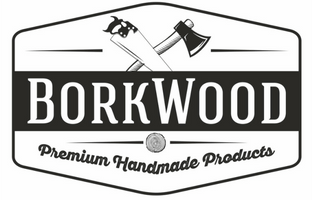Sales Proposals and the Role of Software for It
Sales proposals are integral to the process of winning new clients and sealing deals. They act as the blueprint of an offering, outlining what a company brings to the table in response to a client’s needs. A well-crafted sales proposal can bridge the gap between potential and actual clients, effectively closing deals and fostering long-term partnerships.
In today’s fast-paced, tech-driven environment, software solutions have revolutionized how businesses manage and present their sales proposals. These tools are no longer just “nice-to-have” but critical assets for businesses aiming to stay competitive. This article explores the essentials of sales proposals and how modern software tools are shaping their creation, delivery, and management.
The Basics of Sales Proposals
A sales proposal is a formal document that a business presents to a potential client. It provides detailed information about products or services, pricing, and how the business intends to address the client’s specific needs or pain points. Sales proposals vary in format and content, but their primary goal is to persuade the client to choose your offering over competitors.
In industries such as high-ticket sales, the importance of a polished and well-structured sales proposal cannot be overstated. But what is high ticket sales? These are sales involving premium products or services, often requiring a higher level of trust and customization in the proposal process. For these sales, the stakes are high, and every detail in the proposal can influence the outcome.
Sales proposals are often categorized into two main types:
- Solicited Proposals: Responding to a formal Request for Proposal (RFP) from the client.
- Unsolicited Proposals: Sent proactively, targeting a potential client without prior solicitation.
Both types require a strategic approach, attention to detail, and, increasingly, the support of specialized software to streamline the process.
Key Roles of Sales Proposals:
- Building Trust: A well-crafted proposal reflects professionalism and reliability.
- Clarifying Value: Proposals succinctly explain how your offerings solve client challenges.
- Facilitating Decision-Making: Clear, data-driven proposals simplify the client’s evaluation process.
- Improving Efficiency: With the right tools, proposals can be created and shared more quickly, reducing turnaround times.
However, the complexity of modern sales processes means that traditional methods of creating proposals—like using Word documents or spreadsheets—are no longer sufficient. Businesses need tools that can adapt to the changing landscape.
The Role of Software in Sales Proposals
Proposal software has transformed the way businesses create, customize, and manage their sales proposals. From automating repetitive tasks to tracking client engagement, these tools are essential for sales teams aiming to streamline their workflows and improve outcomes.
Core Benefits of Sales Proposal Software:
- Efficiency: Automates content creation, formatting, and delivery, saving valuable time.
- Customization: Allows for highly personalized proposals tailored to client needs.
- Analytics: Tracks client interactions with the proposal, providing insights into their preferences and decision-making process.
- Collaboration: Facilitates team collaboration, enabling multiple stakeholders to contribute to the proposal.
- Professional Design: Ensures proposals are visually appealing and on-brand.
Let’s explore these benefits in greater detail.
Streamlining the Proposal Creation Process
One of the biggest advantages of using software for sales proposals is its ability to automate time-consuming tasks. Most platforms come equipped with pre-designed templates that are easy to customize. This is particularly useful when creating proposals for high-ticket sales, where attention to detail is critical.
Modern proposal software often integrates with CRM systems, allowing sales teams to pull in client data, project timelines, and pricing details automatically. This not only speeds up the process but also reduces errors and ensures that all proposals are consistent.
Features to Look for in Sales Proposal Software:
- Template Libraries: Pre-designed layouts for various industries and proposal types.
- Drag-and-Drop Builders: Easy-to-use tools for customizing content and design.
- Data Integration: Syncs with existing tools like Salesforce or HubSpot.
- E-Signatures: Enables clients to approve proposals instantly.
Driving Engagement with Interactive Features
In a competitive sales environment, standing out is essential. Traditional, static documents often fail to capture a client’s attention, but interactive proposals can make a lasting impression.
Modern tools enable businesses to create proposals that include dynamic pricing tables, embedded videos, and clickable links. These features engage clients and make it easier for them to explore options and finalize decisions.
Example of Enhanced Engagement:
- A sale proposal for a digital marketing agency might include a video showcasing past projects, a breakdown of pricing options clients can toggle, and links to case studies.
This level of interactivity not only makes the proposal more appealing but also provides clients with a comprehensive understanding of the offering.
The Importance of Analytics in Sales Proposals
One of the standout features of proposal software is its ability to provide real-time analytics. Knowing how a client interacts with a proposal can offer invaluable insights that inform follow-up strategies.
What Analytics Can Reveal:
- Time Spent on Each Section: Identifies which parts of the proposal resonate most with the client.
- Number of Views: Indicates client interest and engagement.
- Download and Share Activity: Shows whether the proposal is being circulated internally.
For instance, if analytics show that a client spent significant time reviewing the pricing section, the sales team can focus their follow-up conversations on cost-benefit discussions.
Collaboration and Teamwork Made Easy
Creating a sales proposal often involves input from multiple team members, including sales reps, marketers, and project managers. Proposal software facilitates collaboration by allowing team members to work on the same document simultaneously.
Collaboration Features:
- Commenting Tools: Enable team members to provide feedback directly within the proposal.
- Version Control: Tracks changes to ensure everyone is working on the most up-to-date version.
- Role-Based Access: Restricts access to sensitive information based on user roles.
This collaborative approach ensures that proposals are well-rounded, accurate, and aligned with company objectives.
Future Trends in Proposal Software
The proposal software landscape is constantly evolving to meet the needs of modern businesses. As we move forward, several trends are expected to shape the future of these tools:
- AI-Driven Personalization: Advanced algorithms will enable proposals to be tailored to client preferences automatically.
- Integration with Emerging Technologies: Tools like augmented reality (AR) and virtual reality (VR) may be used to create immersive proposal experiences.
- Enhanced Security Features: As cyber threats grow, software will prioritize data encryption and compliance with regulations.
- Sustainability: Digital proposals will reduce paper usage, aligning with eco-friendly business practices.
These trends highlight the importance of staying updated with the latest tools and technologies to remain competitive.
Conclusion
Sales proposals are an essential component of any successful sales strategy. They serve as a bridge between businesses and potential clients, effectively communicating value and building trust.
The role of software in this process cannot be overstated. From automating repetitive tasks to providing analytics and enhancing collaboration, proposal software is a game-changer for sales teams. Whether you’re navigating the world of high-ticket sales or crafting a tailored sale proposal for a specific client, the right tools can make all the difference.
As businesses continue to evolve, so too will proposal software. Staying informed about emerging trends and investing in the right platforms will ensure that your sales proposals remain effective, engaging, and impactful. In the end, success in sales isn’t just about having a great product—it’s about presenting it in a way that resonates with your clients. Proposal software helps you do just that.







